April 2015
Greenfinch decline
26/04/15 15:37
We have always had a good number of greenfinch on and around the lane.
Until this year.
GGBW numbers from January show we had 5 in 2013, 5 in 2014 but only one in 2015.
We have scarcely seen one since, although the few we have seen appear healthy enough.
Greenfinch have become relatively dependent on garden feeding secondary to the decline in seed supply in the wider countryside. The emergence of Trichomonas in 2005 further hit the greenfinch population, reducing breeding numbers by approx 35%. It is thought that the infection is spread at least in part via contaminated feeders.
Sad
Until this year.
GGBW numbers from January show we had 5 in 2013, 5 in 2014 but only one in 2015.
We have scarcely seen one since, although the few we have seen appear healthy enough.
Greenfinch have become relatively dependent on garden feeding secondary to the decline in seed supply in the wider countryside. The emergence of Trichomonas in 2005 further hit the greenfinch population, reducing breeding numbers by approx 35%. It is thought that the infection is spread at least in part via contaminated feeders.
Sad
Brave bunny
07/04/15 21:46
There have been rabbits on the lane for a while now, and one in particular has been very much in evidence sniffing around under one of the resident’s car.
Here we see why, when the car was finally moved recently.
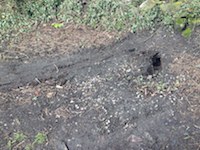
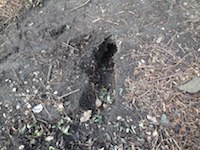
Not sure whether the car or the bunny will suffer most when that burrow finally collapses.
Here we see why, when the car was finally moved recently.


Not sure whether the car or the bunny will suffer most when that burrow finally collapses.
Strange new species
05/04/15 18:54
I noticed this under the coppiced lime this afternoon and at first sight though it was a hitherto unrecorded species for the lane…..
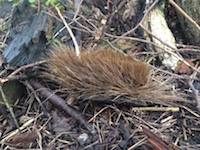
well, not really. It was pretty apparent that it was not a new soft-style hedgehog…
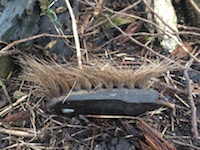
what it was doing there is another question…

well, not really. It was pretty apparent that it was not a new soft-style hedgehog…

what it was doing there is another question…
Coppiced lime
03/04/15 21:06
“Any hardwood tree that is simply cut to the ground rather than being uprooted will sprout again from the stump. So will trees that have been cut back by frost or broken by gales or eaten by grazing animals. There are dormant twig buds all the way up young trunks and shoots, which spring into active growth when the live wood above them vanishes. Hardwood trees have evolved with the capacity to regrow after they are damaged, and can seemingly do this on an almost indefinite basis. The form of tree that results is ubiquitous in both wild and managed landscapes: the roughly circular base, knobbly with scar tissue, the multiple shoots, sometimes seeming like independent trunks if the last cut happened a while ago, or emerging sideways from the stump (or ‘stool”) then curving back towards the vertical. Animals may gnaw away at this regrowth, but it takes a lot to kill a well rooted tree.’
(The Ash and The Beech, Richard Mabey p 68. Random House 2013)
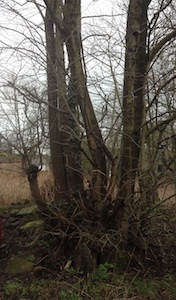
(The Ash and The Beech, Richard Mabey p 68. Random House 2013)





